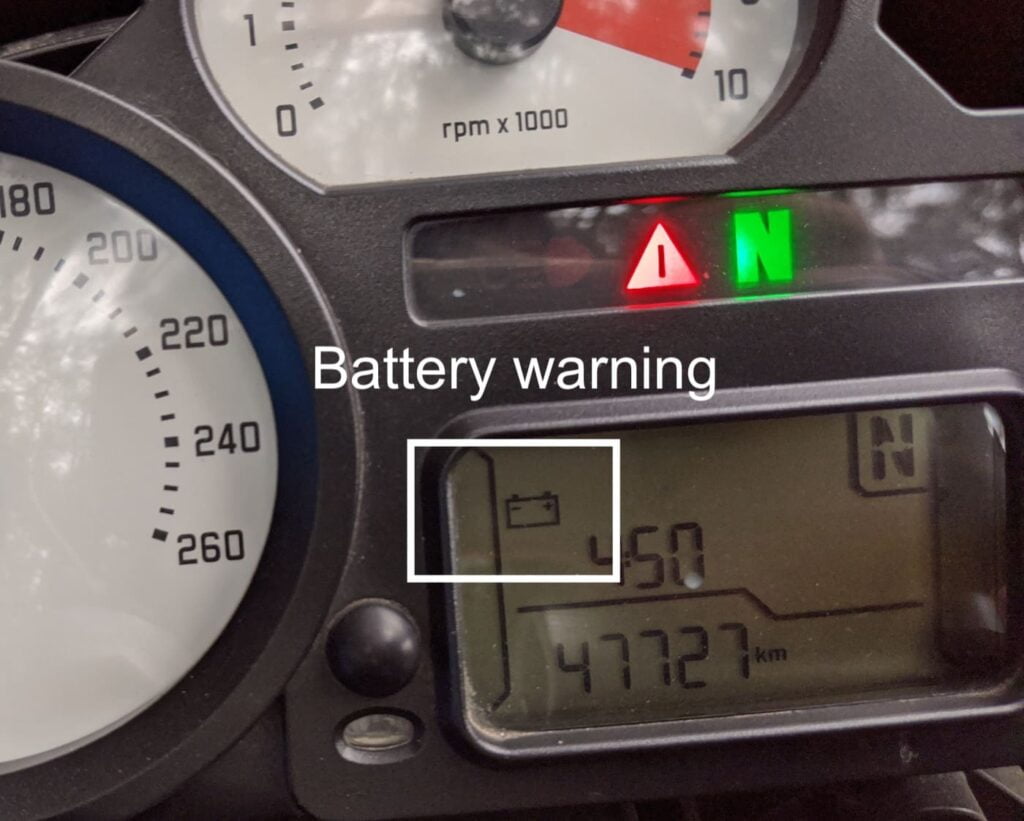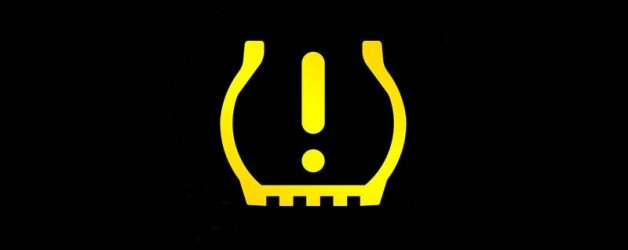Modern motorcycles are equipped with a variety of warning lights on the dashboard that serve as essential indicators of the bike’s health and performance. These lights are designed to alert riders to potential issues, ensuring that they can take prompt action to maintain safety and prevent damage.
Understanding what each warning light means and how to respond can make a significant difference in your riding experience. Ignoring these warnings can lead to serious mechanical problems, safety hazards, and costly repairs. In this guide, we will explore seven common warning lights found on motorcycle dashboards and explain their meanings.
By familiarizing yourself with these indicators, you can stay informed about your bike’s condition and address any issues before they escalate. Let’s see the details of these critical warning lights and what actions you should take when they illuminate.
1. Engine Warning Light
The engine warning light, often represented by a symbol of an engine or the word “Check Engine,” is one of the most crucial indicators on your motorcycle’s dashboard. This light illuminates when the bike’s electronic control unit (ECU) detects an issue with the engine or related systems. Common causes for the engine warning light include problems with the fuel injection system, ignition system, emissions control, or sensors.
When the engine warning light comes on, it’s important to take immediate action. Continuing to ride without addressing the issue can lead to further damage and potentially costly repairs. Start by checking for any obvious problems, such as loose or disconnected wires, low oil levels, or fuel system issues. If you cannot identify the problem, it’s best to have your motorcycle inspected by a professional mechanic.

Using an OBD-II scanner can help diagnose the specific issue causing the engine warning light to illuminate. The scanner reads diagnostic trouble codes (DTCs) stored in the ECU, providing valuable information for troubleshooting. Once the issue is identified, have it repaired promptly to ensure your bike continues to run smoothly and safely.
Ignoring the engine warning light can lead to decreased performance, reduced fuel efficiency, and potential engine damage. By addressing the issue as soon as the light comes on, you can prevent further problems and ensure your motorcycle remains in optimal condition.
2. Oil Pressure Warning Light
The oil pressure warning light, typically represented by an oil can symbol, is a critical indicator of your motorcycle’s engine health. This light illuminates when the engine’s oil pressure falls below the optimal level, which can lead to insufficient lubrication and potential engine damage. Common causes for low oil pressure include low oil levels, oil pump failure, or clogged oil passages.
When the oil pressure warning light comes on, it’s important to take immediate action to prevent engine damage. Start by pulling over to a safe location and turning off the engine. Check the oil level using the dipstick, and add oil if necessary. If the oil level is sufficient but the warning light remains on, it may indicate a more serious issue that requires professional inspection.

Running the engine with low oil pressure can cause severe damage to internal components such as bearings, camshafts, and pistons. To avoid costly repairs, have your motorcycle inspected by a mechanic as soon as possible. They can diagnose the cause of the low oil pressure and perform the necessary repairs to restore proper lubrication.
Ignoring the oil pressure warning light can lead to catastrophic engine failure. By addressing the issue promptly, you can ensure your motorcycle’s engine remains well-lubricated and protected, allowing you to enjoy many more miles of trouble-free riding.
3. Temperature Warning Light
The temperature warning light, often represented by a thermometer or coolant symbol, indicates that your motorcycle’s engine is overheating. Overheating can occur due to a variety of reasons, including low coolant levels, a malfunctioning thermostat, a faulty radiator fan, or a clogged cooling system. When the temperature warning light illuminates, it’s essential to address the issue immediately to prevent engine damage.
If the temperature warning light comes on while you’re riding, pull over to a safe location and turn off the engine. Allow the engine to cool down before attempting to check the coolant level. Never open the radiator cap when the engine is hot, as it can cause scalding coolant to spray out. Once the engine has cooled, check the coolant level and add coolant if necessary. Inspect the cooling system for any visible leaks or damage.

If the coolant level is sufficient but the temperature warning light remains on, it may indicate a more serious issue that requires professional inspection. Have your motorcycle inspected by a mechanic to diagnose and address the cause of the overheating.
Ignoring the temperature warning light can lead to severe engine damage, including warped cylinder heads, blown head gaskets, and other costly repairs. By addressing the issue promptly, you can prevent overheating and ensure your motorcycle’s engine operates within the optimal temperature range.
4. Battery Warning Light
The battery warning light, often represented by a battery symbol, indicates an issue with your motorcycle’s charging system. This light illuminates when the battery is not being charged properly, which can lead to a dead battery and electrical system failure. Common causes for the battery warning light include a faulty alternator, loose or corroded battery terminals, or a failing voltage regulator.
When the battery warning light comes on, it’s important to take immediate action to avoid getting stranded with a dead battery. Start by checking the battery terminals for any signs of corrosion or looseness. Clean and tighten the terminals if necessary. If the warning light remains on, it may indicate a problem with the charging system that requires professional inspection.

A mechanic can test the alternator, voltage regulator, and battery to determine the cause of the charging issue. If any of these components are faulty, they will need to be replaced to restore proper charging. In some cases, a simple repair, such as replacing a worn-out belt, may resolve the issue.
Ignoring the battery warning light can lead to a dead battery, leaving you stranded and unable to start your motorcycle. By addressing the issue promptly, you can ensure your bike’s charging system operates efficiently, providing reliable power for all electrical components.
5. ABS Warning Light
The ABS (Anti-lock Braking System) warning light indicates a problem with your motorcycle’s ABS. This system helps prevent wheel lock-up during braking, improving control and reducing the risk of skidding. When the ABS warning light illuminates, it means the system is not functioning correctly and may not provide the intended braking assistance.
Common causes for the ABS warning light include a malfunctioning ABS sensor, damaged wiring, or a faulty ABS control module. When this light comes on, it’s important to have the ABS system inspected by a professional mechanic. They can diagnose the issue using specialized diagnostic tools and perform the necessary repairs or replacements.

While your motorcycle’s regular braking system will still function without ABS, the additional safety benefits of ABS will be lost. This can lead to increased stopping distances and a higher risk of skidding, especially on slippery surfaces. To ensure optimal braking performance and safety, address the ABS warning light promptly.
Ignoring the ABS warning light can compromise your motorcycle’s braking performance and increase the risk of accidents. By having the system inspected and repaired, you can maintain the safety and effectiveness of your bike’s braking system.
6. Fuel Warning Light
The fuel warning light, often represented by a gas pump symbol, indicates that your motorcycle’s fuel level is low. While this may seem like a straightforward warning, running out of fuel can lead to more than just inconvenience. Riding on an empty tank can cause the fuel pump to overheat and fail, leading to costly repairs.
When the fuel warning light comes on, it’s important to refuel your motorcycle as soon as possible. Most motorcycles have a reserve fuel tank that allows you to switch to reserve mode and continue riding for a short distance until you can reach a fuel station. Familiarize yourself with your bike’s reserve fuel capacity and range to avoid running out of fuel unexpectedly.

In addition to refueling promptly, it’s a good idea to keep an eye on your fuel gauge and plan your rides accordingly. Running out of fuel in remote areas can leave you stranded and in need of assistance.
By addressing the fuel warning light promptly and keeping your tank adequately filled, you can ensure a smooth and uninterrupted riding experience. Regularly checking your fuel level and planning refueling stops can help prevent the inconvenience and potential damage caused by running out of fuel.
7. Tire Pressure Warning Light
The tire pressure warning light, often represented by an exclamation mark within a tire cross-section, indicates that one or more of your motorcycle’s tires are underinflated. Proper tire pressure is essential for safe handling, traction, and fuel efficiency. Underinflated tires can lead to uneven wear, reduced performance, and an increased risk of blowouts.
When the tire pressure warning light comes on, it’s important to check the pressure of all tires using a reliable tire pressure gauge. Refer to your motorcycle’s owner’s manual for the recommended tire pressure specifications. If any tire is underinflated, inflate it to the proper pressure immediately.

In some cases, the tire pressure warning light may indicate a slow leak or puncture. Inspect the tires for any visible damage, such as nails or cuts, and have them repaired or replaced if necessary. Regularly checking and maintaining proper tire pressure can help prevent issues and extend the life of your tires.
Ignoring the tire pressure warning light can lead to poor handling, decreased fuel efficiency, and an increased risk of tire failure. By addressing the issue promptly, you can ensure the safe and optimal performance of your motorcycle’s tires.
Understanding and responding to these warning lights on your motorcycle dashboard is crucial for maintaining safety, performance, and reliability. By staying vigilant and addressing issues promptly, you can ensure a smooth and enjoyable riding experience.

